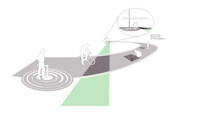
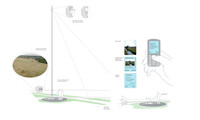
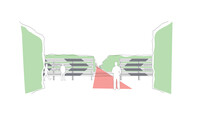
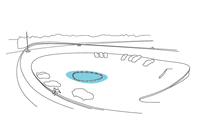
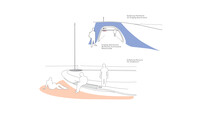
Tracking - Mobility Park
Search for clues
The Roman evidence lies hidden in the landscape and is its secret. The design wants to make their traces visible without destroying the poetry of the hidden. Interventions should only enable the visitor to experience the historical images and time levels hidden in the landscape and the archaeological work or Provide perspectives in a place that cannot be further explored archaeologically. Searching for and finding the unobtrusive signs, their existence and past reality is the task of selectively set landmarks. The traces of the Villa Frauenthal, the historical Erft crossing and course of the Erft as well as those of the Römerstraße are revealed to the visitor by vertical visual aids. Walking through the agricultural fields becomes a game of discovery.
Mobility Park
What would a park of mobility be that is not itself an expression of mobility, that does not take the opportunity to let its infrastructure and movement spaces become an exhibit itself and that does not make use of the latest technology of the mobile age? In the Park of Mobility, the infrastructure becomes an exhibit. Access, stationary traffic, course and information system become part of the exhibited mobility. Visitors to the “Park of Mobility” are encouraged to move and see themselves as part of the mobile system.